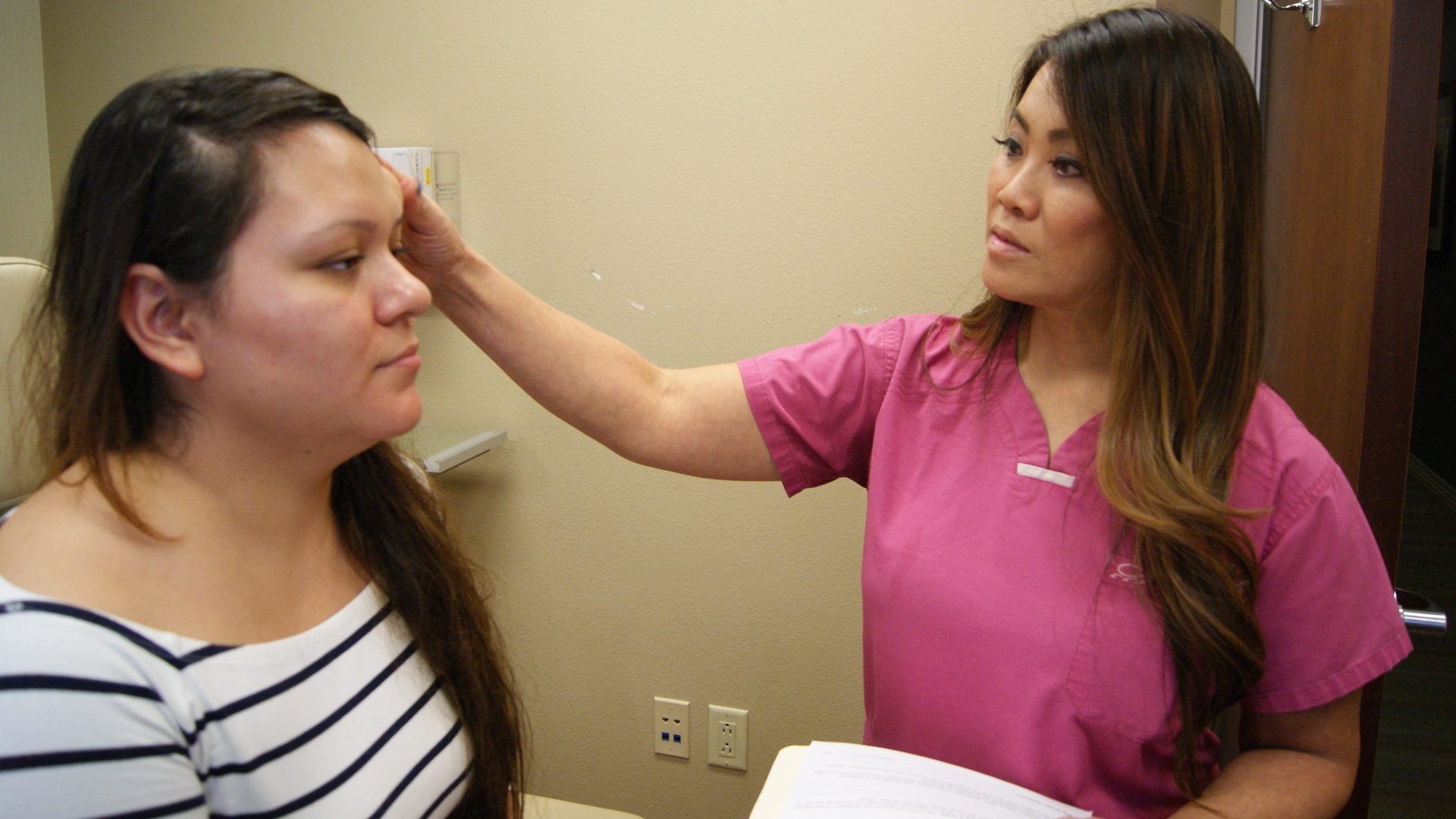Hard-core beauty fanatics have brought the YouTube sensation Dr. Pimple Popper to TV
If you’re (finally) tired of watching slime videos, consider watching the YouTube channel of board-certified dermatologist Sandra Lee, MD—aka, Dr. Pimple Popper. The Los Angeles-based doctor has over three million YouTube subscribers, 69K Twitter followers, and 2.6 million Instagram followers. Not bad for someone whose entire social media presence involves, well, gross 12-year-old boy humor. (One recent video shows pus being squeezed of a cyst in a thick noodle-shape. “Linguini is our fav type of noodle ;)” was the caption.)


If you’re (finally) tired of watching slime videos, consider watching the YouTube channel of board-certified dermatologist Sandra Lee, MD—aka, Dr. Pimple Popper. The Los Angeles-based doctor has over three million YouTube subscribers, 69K Twitter followers, and 2.6 million Instagram followers. Not bad for someone whose entire social media presence involves, well, gross 12-year-old boy humor. (One recent video shows pus being squeezed of a cyst in a thick noodle-shape. “Linguini is our fav type of noodle ;)” was the caption.)

Lee herself is articulate and photogenic with high cheekbones, long shiny hair, and enviably dewy skin—so it’s no surprise that she has a television special debuting on basic cable channel TLC on January 3, 2018. “A TV special about pimple popping. Can you even believe it?” she announced on Instagram. TLC and Dr. Pimple Popper also teamed up for an exclusive Facebook series called “This is Zit”—first episode starring a bulbous epidermoid cyst out now.
“On YouTube, you see the videos of my patients getting procedures from my perspective, but don’t know the patient. We keep them anonymous,” she explained through email. “On the TLC show, you meet the patients, hear their backstory, see how I and the staff interact with them, see more of my office, and also get to see the patients’ follow ups.”
Lee’s up-close-and-very-personal videos have always been about education as much as they are about our fascination with body functions. If you’ve ever been afflicted with a case of acne, you may have been tempted to pick at your face, especially at the whiteheads that look like they’re about to erupt like volcanoes. A quick Google search will tell you not to pick at your face, if your mother didn’t teach you that already. Another quick Google search will tell that pimple popping videos (the grosser, the better) are a viral sensation.
In fact, it’s because zit picking is so taboo that we are so interested in the Dr. Pimple Popper videos. Sure, they’re gross, but at least these extractions are performed by medical professionals with sterilized equipment. That’s better than what you’re doing in front of your bathroom sink. Just last week, actress Emmy Rossum shared a traumatizing experience about DIY pimple popping with Glamour: “I put a warm cloth on it, I did everything right. I used two little Q-tips to pop it, and then the next day I woke up and there was a huge scab between my eyes. It looked like I had a third eye!”
Some of Lee’s videos were being flagged and deleted by YouTube for being “‘gory, disgusting and for shock value.” “I’m not doing this for shock value,”she told Forbes in 2016. “Honestly, it was insulting that they leave videos on of people getting shot or even porn and they would take my content down.” Lee has recently expanded into selling branded merchandise under the Dr. Pimple Popper name, including a $25 blackhead tweezer identical to the one she uses in her videos, and a skincare line dedicated to acne.
Lee’s on-camera cyst popping is also a public service, of sorts. All camera shots are zoomed in on the local region of skin, and personal identifiers like name, face, or voice are never shown. Because blackhead extraction is not covered by insurance—it’s considered an aesthetic, not medical treatment—patients must pay out-of-pocket for the service. But if they opt into being filmed anonymously for the Dr. Pimple Popper YouTube channel, they get the service for free. Whether you go to a doctor’s office or DIY your zit popping, avoid using your bare fingers. Now that’s gross.